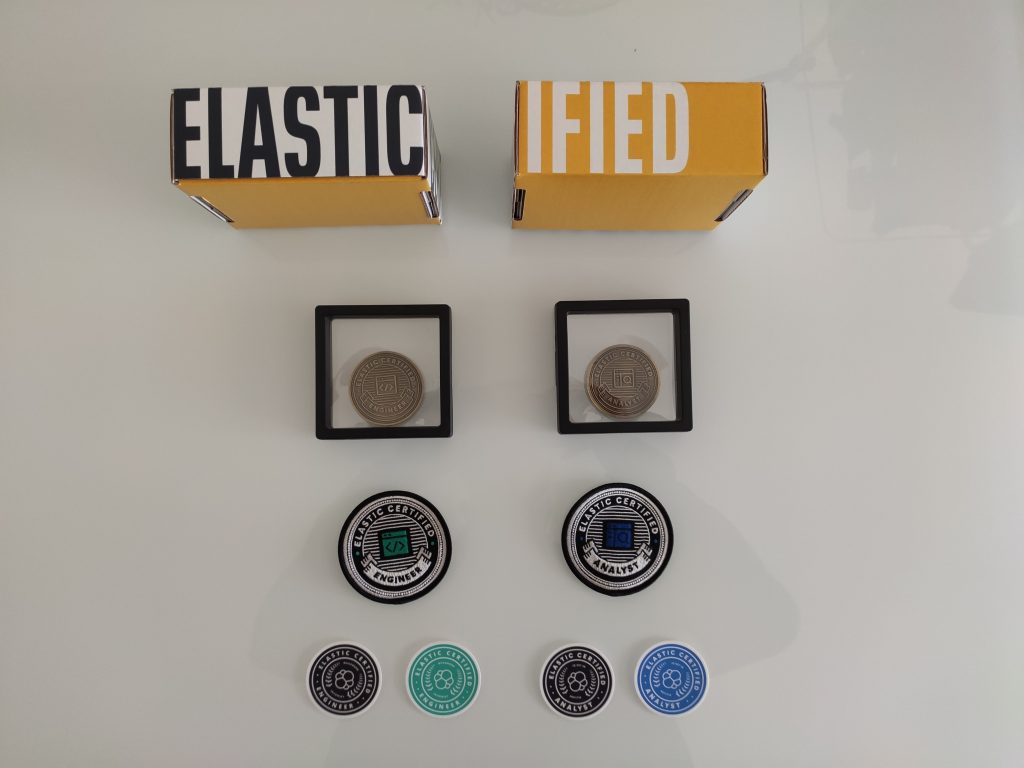This post follows the one written some time ago by my colleague Mirko Bez. We became Elasticsearch Certified Professionals after passing both the Engineer exam and Analyst exam.
In this post I’d like to tell you about my experience with the Analyst certification.
This exam focuses mainly on Kibana, and 99% of the task can be done through the web interface. The course also contains a chapter about using Elasticsearch queries: it will give you basic knowledge about how Elasticsearch works in order to exploit some of Kibana’s advanced features.
Each lesson starts with very basic tasks such as using the Discovery and Query bar, up to the usage of really advanced tasks such as TSVB, Maps, Vega visualization, Machine learning and many others. Note though that not all Kibana apps are covered in this exam: for example, the SIEM and APM apps are described in their own dedicated courses.
In my opinion, the on-demand lessons are really well prepared because they lead you from a “Kibana for dummies” level to a comfort level even for the more advanced features.
My Preparation
I attended this exam in on-demand mode: Elastic provides written theoretical lessons furnished with video demos of the features explained. As in the Engineer course, a lab is provided to let you try out the long list of exercises available. Solutions come in the form of videos allowing you to always understand the right solution quickly. I suggest watching them even when you are pretty sure of your work: you may happen to find an alternative way to solve the same problem.
Finally, a workshop is available for exam preparation explaining both bureaucratic tasks and exercises. The exam platform and booking are pretty much the same as for the Engineer exam, while the exam itself has some differences, so it can be useful to attend this workshop.
I also suggest taking a look at the syllabus: not all the arguments are required for the exam, though you should take a look at them.
The Exam
- In my case I had to solve 10 exercises
- The exam lasted 2 hours (not 3 hours as in the Engineer exam)
- The various exercises may have much different point values, so choose carefully where you start
- Exercises are less straightforward to understand: sometimes you have to provide a dashboard to answer a question (e.g., which day has better access to our website)
- Often you have many solutions to the same question (dashboard type, filters datasets, etc.)
- You should pay a lot of attention to the name you give dashboards and visualizations since a script will check them
The time allotted is more than enough to complete the exam even if you have some doubt or you try different solutions. Documentation is also available, so get familiar with it.
The only drawback is that, in the event of technical issues, no extra time will be given: in my case I lost the connection with the proctor for about 15 minutes and so I had to complete the exam in only 1 hour and 45 minutes. So I strongly recommend that you go through the exercises and complete them as fast as possible, then go over them a second time if necessary.
Conclusion
I really enjoyed both the preparation and the exam itself: it was really funny, and easier to prepare for than the Engineer one. If you have the chance to attend the Analyst exam, I really recommend it in order to improve your understanding of all the Kibana features: to me the part about machine learning was really interesting because I had never used it.
Finally… the Swag!
Some time after completing both exams (in my case several weeks later), you should get your swag: for each certification you’ll receive a framed metal coin, a fabric patch and two exclusive stickers.








